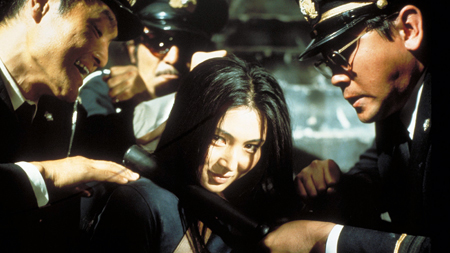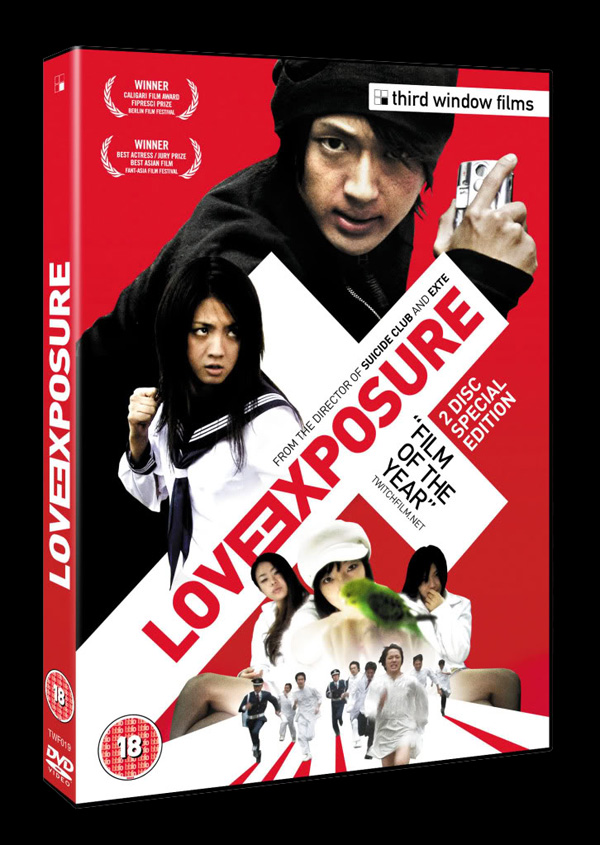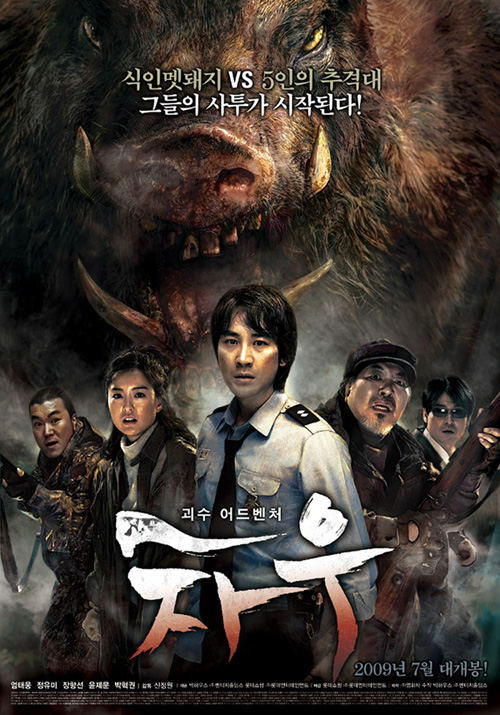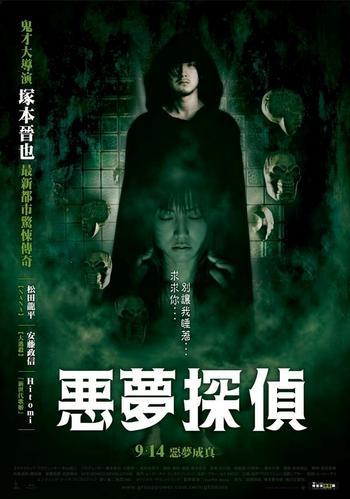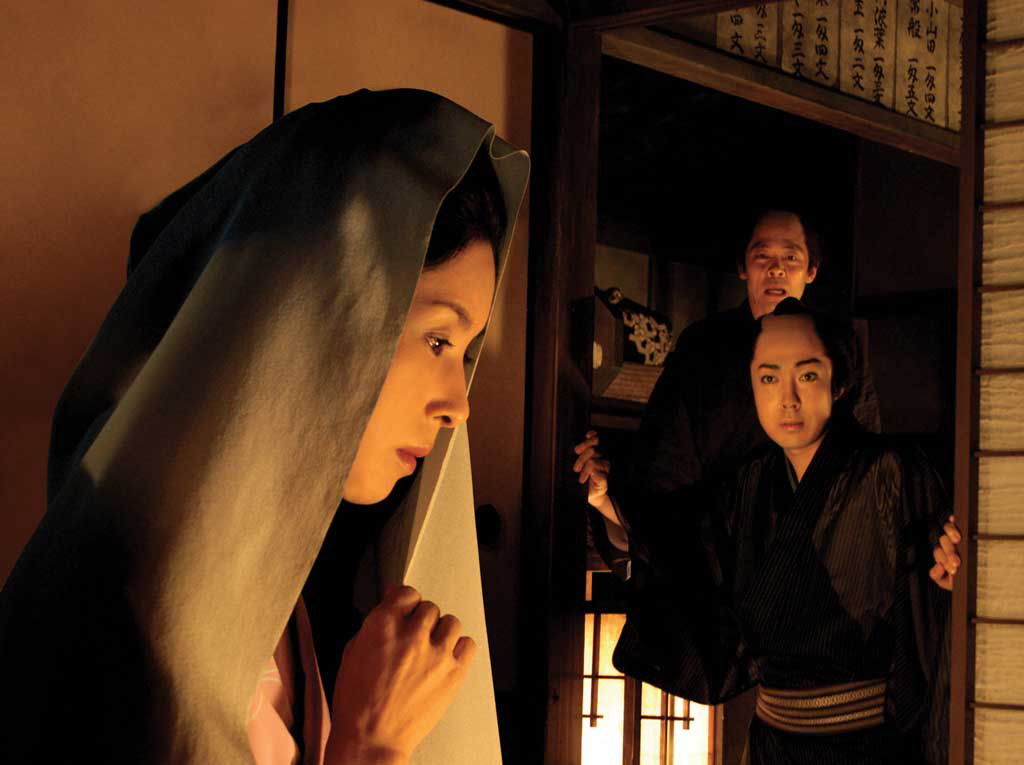 Kaidan means "ghost story," but here, it's short for Kaidan Kasanegafuchi which translates roughly as Ghost Story: The Depths of Kasane (Kasane is the name of a swamp). This 2007 film is one of at least half a dozen adaptations of the classic supernatural revenge tragedy Shinkei Kasanegafuchi, penned by rakugo (stylized monologue) performer Encho Sanyutei in 1859. Indeed, at the beginning of the film we see Encho himself telling the tale in the traditional manner. Encho's story is heavily influenced by Namboku Tsuruya IV's Kabuki shocker Tokaido Yotsuya kaidan (1825, another source for numerous films), and these tales, along with others, form the foundation of the traditional long-haired, vengeful lady ghost so prevalent in J-horror films of the late 90s and early 00s.
Kaidan means "ghost story," but here, it's short for Kaidan Kasanegafuchi which translates roughly as Ghost Story: The Depths of Kasane (Kasane is the name of a swamp). This 2007 film is one of at least half a dozen adaptations of the classic supernatural revenge tragedy Shinkei Kasanegafuchi, penned by rakugo (stylized monologue) performer Encho Sanyutei in 1859. Indeed, at the beginning of the film we see Encho himself telling the tale in the traditional manner. Encho's story is heavily influenced by Namboku Tsuruya IV's Kabuki shocker Tokaido Yotsuya kaidan (1825, another source for numerous films), and these tales, along with others, form the foundation of the traditional long-haired, vengeful lady ghost so prevalent in J-horror films of the late 90s and early 00s.So it comes as little surprise that director Hideo Nakata (The Ring), seeing the phenomena he'd almost single-handedly launched a decade earlier beginning to wane, should return to the old well (as it were). Here we have a finely crafted, well-paced, traditional kaidan, masterfully mounted with just the right blend of stately grace and blood-curdling chills. Those new to jidai-geki (period drama) should have little trouble adjusting; the film is accessible, in similar 21st century fashion, to Yoji Yamada's samurai trilogy (Twilight Samurai, Hidden Blade, Love and Honor) and Kon Ichikawa's Dora-Heita -- except here there be ghosts.
The story involves two generations, with a sins-of-the-fathers theme woven throughout. Essentially its boy meets girl, but neither know that his father brutally murdered her father. He's a nice guy, but cursed by his wicked family karma to inadvertently cause the deaths of a lot of people, at least one of whom becomes that vengeful wraith with all the hair ... Kaidan should not be confused with Kwaidan, Masaki Kobayashi's 1964 masterpiece based on the ghost stories of Scotsman Lafcadio Hearn (at least one of which was a re-working of a story by Encho!).
Personally, my only other reference point is the B&W 1957 Kaidan Kasanegafuchi (Ghosts of Kasane Swamp) directed by Nobuo Nakagawa. Clocking in at a little over an hour, it actually utilizes more special effects than Nakata's version! The pace is also more frenetic than that of its 2007 cousin (the latter running at just under two hours), and the story much foreshortened. Tetsuro Tamba plays a villainous character who never shows up in Nakata's film, although several additional characters not in the Nakagawa version do. I'm guessing that Nakata's interpretation is more loyal to the source material and that Nakagawa did a bit of cutting (a la Olivier with Hamlet) for the sake of cinematic forward thrust.
Those familiar with my books will know I'm a sucker for Japanese period drama, as well as Japanese horror, so a film like this is right up my particular street. And it's an excellent interpretation of a kaidan classic. What's not to like?

